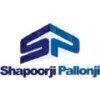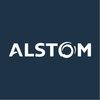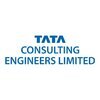
i
Larsen & Toubro
Limited
Proud winner of ABECA 2025 - AmbitionBox Employee Choice Awards
Filter interviews by
Larsen & Toubro Limited Graduate Engineer Trainee (Get) Interview Questions and Answers
101 Interview questions
Resistance, capacitance, and inductance are fundamental electrical properties that affect how circuits operate.
Resistance (R) opposes current flow; measured in ohms (Ω). Example: a resistor in a circuit.
Capacitance (C) stores electrical energy; measured in farads (F). Example: a capacitor in power supplies.
Inductance (L) opposes changes in current; measured in henries (H). Example: an inductor in radio transmitter...
The XOR gate outputs true only when inputs differ, making it a fundamental digital logic gate.
XOR stands for 'exclusive or'.
Truth table has two inputs: A and B.
Output is true (1) if A and B are different.
Output is false (0) if A and B are the same.
Example: A=0, B=0 -> Output=0; A=0, B=1 -> Output=1; A=1, B=0 -> Output=1; A=1, B=1 -> Output=0.
A class in C# is a blueprint for creating objects that define properties, methods, and events.
Classes are used to create objects in C#.
They can have fields, properties, methods, and events.
Classes can be inherited by other classes.
Example: class Car { public string model; public void Start() { //code here } }
DNS stands for Domain Name System. It translates domain names to IP addresses.
DNS is like a phone book for the internet, translating human-readable domain names (like google.com) to IP addresses (like 172.217.3.206).
It helps users access websites and other online services by resolving domain names to their corresponding IP addresses.
DNS also helps in load balancing, security, and email delivery by providing accura...
What people are saying about Larsen & Toubro Limited






Using Rank() in SQL to fetch top 3 salaries from employee table.
Use Rank() function to assign a rank to each row based on salary.
Filter the results to only include rows with rank less than or equal to 3.
Order the results by salary in descending order to get the top salaries.
My area of interest includes computer science, artificial intelligence, and machine learning.
Computer science
Artificial intelligence
Machine learning
A rectifier is an electrical device that converts alternating current (AC) to direct current (DC).
Rectifiers are used in power supplies and electronic devices to convert AC to DC.
Types of rectifiers include half-wave, full-wave, and bridge rectifiers.
Half-wave rectifiers only allow one half of the AC waveform to pass through.
Full-wave rectifiers allow both halves of the AC waveform to pass through.
Bridge rectifier...
Tensile strength is the maximum amount of tensile (stretching) stress a material can withstand before breaking.
Tensile strength is a measure of a material's ability to resist breaking under tension.
It is typically expressed in units of force per unit area, such as MPa or psi.
Higher tensile strength indicates a stronger material.
Examples of high tensile strength materials include steel and carbon fiber.
Tensile stre...
A diesel engine consists of several parts that work together to convert fuel into mechanical energy.
Cylinder block: houses the cylinders and other major components
Piston: moves up and down inside the cylinder to compress air and fuel mixture
Crankshaft: converts linear motion of pistons into rotational motion
Camshaft: controls the opening and closing of valves
Fuel injectors: deliver fuel into the combustion chamber
...
Two stroke engines have power strokes every revolution, while four stroke engines have power strokes every other revolution.
Two stroke engines have a simpler design with fewer moving parts compared to four stroke engines.
Two stroke engines require a fuel-oil mixture for lubrication, while four stroke engines have a separate oil reservoir.
Two stroke engines are lighter and have a higher power-to-weight ratio than f...
Larsen & Toubro Limited Graduate Engineer Trainee (Get) Interview Experiences
97 interviews found
I applied via LinkedIn and was interviewed in Dec 2024. There were 2 interview rounds.
Just Normal aptitude and question from domain
(2 Questions)
- Q1. Give introduction
- Ans.
I am a highly motivated and experienced professional with a strong background in marketing and sales.
Over 10 years of experience in marketing and sales
Proven track record of exceeding sales targets
Strong communication and negotiation skills
Expertise in developing and implementing marketing strategies
Proficient in market research and analysis
- Q2. Your hobbies
- Ans.
My hobbies include reading, hiking, and painting.
Reading: I enjoy diving into a good book and exploring different genres.
Hiking: I love spending time outdoors, exploring nature trails and challenging myself physically.
Painting: I find relaxation and creativity in expressing myself through art.
Interview Preparation Tips
I applied via Recruitment Consulltant and was interviewed in Oct 2024. There were 2 interview rounds.
130 questions in 120 min
(1 Question)
- Q1. Introduction and about family
Interview Preparation Tips
I applied via Campus Placement and was interviewed in Oct 2023. There was 1 interview round.
(5 Questions)
- Q1. Working principle of 3 phase induction motor
- Ans.
3 phase induction motor works on the principle of electromagnetic induction to generate rotating magnetic field.
Three phase AC current is supplied to stator windings, creating a rotating magnetic field.
This rotating magnetic field induces current in rotor windings, causing rotor to rotate.
Speed of rotation is slightly less than synchronous speed due to slip.
Commonly used in industrial applications for driving pumps, co...
- Q2. Types of Circuit breaker
- Ans.
Types of circuit breakers include thermal, magnetic, and hybrid.
Thermal circuit breakers operate based on the heat generated by excessive current flow.
Magnetic circuit breakers operate based on the strength of the magnetic field produced by excessive current flow.
Hybrid circuit breakers combine features of both thermal and magnetic circuit breakers.
Other types include oil circuit breakers, air circuit breakers, and vac...
- Q3. Types of electrical motor .
- Ans.
Types of electrical motors include AC motors (induction, synchronous), DC motors (brushed, brushless), and special types like stepper motors.
AC motors: induction, synchronous
DC motors: brushed, brushless
Special types: stepper motors
Examples: Induction motor, Synchronous motor, Brushed DC motor, Brushless DC motor, Stepper motor
- Q4. What's rectifier and it's types
- Ans.
A rectifier is an electrical device that converts alternating current (AC) to direct current (DC).
Rectifiers are used in power supplies and electronic devices to convert AC to DC.
Types of rectifiers include half-wave, full-wave, and bridge rectifiers.
Half-wave rectifiers only allow one half of the AC waveform to pass through.
Full-wave rectifiers allow both halves of the AC waveform to pass through.
Bridge rectifiers use...
- Q5. What is electrical hazards and how to deal with it
- Ans.
Electrical hazards are potential dangers posed by electricity, which can cause harm or injury if not properly managed.
Identify potential electrical hazards in the workplace
Implement proper safety measures such as using insulated tools and wearing appropriate personal protective equipment
Regularly inspect and maintain electrical equipment to prevent malfunctions
Provide training to employees on how to safely work with el...
Interview Preparation Tips
I applied via Campus Placement and was interviewed in Sep 2023. There were 4 interview rounds.

(1 Question)
- Q1. Tell us about yourself and your family.
- Ans.
I come from a close-knit family with diverse backgrounds and interests.
I have two siblings, an older brother and a younger sister.
My parents are both doctors, and they have instilled in me a strong work ethic and a passion for helping others.
We enjoy spending quality time together, whether it's going on family vacations or simply having dinner together every night.
My family has always been supportive of my goals and as...
(5 Questions)
- Q1. 1. Example of cantilever beam in real world.
- Ans.
A cantilever beam is a structural element that is supported at one end and carries a load at the other end.
Cantilever bridges, such as the Forth Bridge in Scotland
Diving boards
Overhanging balconies
Shelves attached to a wall
Flagpoles
- Q2. 2. Types of gear
- Ans.
Types of gear include mechanical, electronic, and digital gear.
Mechanical gear uses physical components to transmit power or motion, such as gears, pulleys, and belts.
Electronic gear uses electronic components to control or manipulate signals, such as transistors, diodes, and integrated circuits.
Digital gear refers to devices that process and transmit digital information, such as computers, smartphones, and digital cam...
- Q3. 3. Compare SI engine and CI engine according to their efficiency.
- Ans.
SI engines are more efficient at low loads, while CI engines are more efficient at high loads.
SI engines (Spark Ignition) use a spark plug to ignite the fuel-air mixture, while CI engines (Compression Ignition) rely on compression to ignite the fuel.
SI engines are typically used in gasoline-powered vehicles, while CI engines are commonly found in diesel-powered vehicles.
SI engines have higher thermal efficiency at low ...
- Q4. 4. What is entropy and enthalpy
- Ans.
Entropy is a measure of disorder or randomness in a system, while enthalpy is the heat content of a system.
Entropy is a thermodynamic property that quantifies the degree of randomness or disorder in a system.
Enthalpy is the total heat content of a system, including both its internal energy and the work done on or by the system.
Entropy tends to increase in spontaneous processes, leading to a more disordered state.
Enthal...
- Q5. 5. State 1st law of thermodynamics.
- Ans.
The first law of thermodynamics states that energy cannot be created or destroyed, only transferred or converted.
Energy is conserved in any thermodynamic process.
It can change forms, such as from heat to work or vice versa.
The total energy of a closed system remains constant.
Mathematically expressed as ΔU = Q - W, where ΔU is the change in internal energy, Q is the heat added to the system, and W is the work done by th...
(1 Question)
- Q1. Topic- "Youth in Politics" Extempore duration 2min.
- Ans.
Youth in Politics
Youth involvement in politics is crucial for a vibrant democracy
Young people bring fresh perspectives, innovative ideas, and energy to the political arena
They can advocate for issues that directly affect their generation, such as climate change or education reform
Youth participation can help bridge the generational gap and promote intergenerational dialogue
Examples: The election of Emmanuel Macron as t...
I appeared for an interview before Jun 2024, where I was asked the following questions.
- Q1. What are resistance, capacitance, and inductance?
- Ans.
Resistance, capacitance, and inductance are fundamental electrical properties that affect how circuits operate.
Resistance (R) opposes current flow; measured in ohms (Ω). Example: a resistor in a circuit.
Capacitance (C) stores electrical energy; measured in farads (F). Example: a capacitor in power supplies.
Inductance (L) opposes changes in current; measured in henries (H). Example: an inductor in radio transmitters.
- Q2. What are the different types of grounding?
- Ans.
Grounding types include electrical, functional, and safety grounding, each serving distinct purposes in various applications.
Electrical Grounding: Connects electrical systems to the earth to prevent shock (e.g., grounding rods).
Functional Grounding: Ensures proper operation of electrical devices (e.g., grounding in audio equipment).
Safety Grounding: Protects users from electrical faults (e.g., grounding in household ap...
- Q3. What are the different types of rectifiers?
- Ans.
Rectifiers convert alternating current (AC) to direct current (DC) and come in various types, each with unique characteristics.
Half-Wave Rectifier: Uses one diode; only half of the AC waveform is utilized. Example: Simple power supply circuits.
Full-Wave Rectifier: Uses two or more diodes; both halves of the AC waveform are utilized. Example: Bridge rectifier circuits.
Bridge Rectifier: A specific type of full-wave recti...
- Q4. Can you describe your final year project and its significance?
- Q5. What are the classifications of overhead transmission lines?
- Ans.
Overhead transmission lines are classified based on voltage levels, construction types, and usage in power distribution.
Classification by Voltage: Low (up to 1 kV), Medium (1 kV to 33 kV), High (33 kV to 132 kV), Extra High (132 kV to 765 kV).
Construction Types: Single Circuit (one set of conductors), Double Circuit (two sets of conductors), and Multi-Circuit (more than two sets).
Usage: Transmission lines (long distanc...
Graduate Engineer Trainee (Get) Interview Questions & Answers
posted on 12 Jun 2024
Moderate level questions were asked and 4 Sections are included
(2 Questions)
- Q1. Is code of reinforced concrete?
- Ans.
Yes, reinforced concrete is a type of concrete that has steel bars or mesh embedded within it to increase its strength.
Reinforced concrete is a composite material where the concrete provides the compressive strength and the steel reinforcement provides the tensile strength.
The steel reinforcement can take the form of bars, mesh, or fibers, and is placed strategically within the concrete to resist tension forces.
Reinfor...
- Q2. Volume of steel
- Ans.
Volume of steel is calculated by multiplying the area of the steel by its thickness.
Volume of steel = Area of steel x Thickness
Area of steel can be calculated using the formula for the shape of the steel (e.g. rectangle, circle)
Thickness is the measurement of how thick the steel is
I applied via Campus Placement and was interviewed in May 2023. There were 3 interview rounds.

In the aptitude, there was Quants, Logical Reasoning, Verbal Reasoning and Domain questions. Quants, Logical and Verbal each had 30 questions and Domain section had 40 questions. Domain section was the toughest while the other sections were extremely easy. quants questions consisted of finding average, number series and other simple questions. Logical reasoning had diagrams, pattern recognition etc. and Verbal Reasoning had finding antonyms, synonyms, complete the following sentence etc. for domain section, it is advisable to prepare your domain specific theory extremely well and also have a firm grip on numericals as well.
(7 Questions)
- Q1. What is the difference between a Two Stroke and a Four stroke engine?
- Ans.
Two stroke engines have power strokes every revolution, while four stroke engines have power strokes every other revolution.
Two stroke engines have a simpler design with fewer moving parts compared to four stroke engines.
Two stroke engines require a fuel-oil mixture for lubrication, while four stroke engines have a separate oil reservoir.
Two stroke engines are lighter and have a higher power-to-weight ratio than four s...
- Q2. How do you measure the ultimate Tensile Strength of a material?
- Ans.
Ultimate tensile strength of a material is measured by subjecting a sample to a tensile test until it fractures.
Ultimate tensile strength is the maximum stress a material can withstand before breaking.
To measure it, a sample of the material is pulled in a tensile testing machine until it fractures.
The force applied to the sample is continuously measured, and the stress is calculated by dividing the force by the cross-s...
- Q3. Tell me about yourself
- Q4. Draw a stress strain curve for ductile and brittle materials and explain it
- Ans.
Stress strain curves show the relationship between stress and strain in materials.
Ductile materials have a gradual yielding and necking process on the curve.
Brittle materials have a sudden fracture after reaching the ultimate strength.
Ductile materials show higher toughness compared to brittle materials.
Examples of ductile materials include steel and aluminum.
Examples of brittle materials include ceramics and glass.
- Q5. What are the parts in a diesel engine?
- Ans.
A diesel engine consists of several parts that work together to convert fuel into mechanical energy.
Cylinder block: houses the cylinders and other major components
Piston: moves up and down inside the cylinder to compress air and fuel mixture
Crankshaft: converts linear motion of pistons into rotational motion
Camshaft: controls the opening and closing of valves
Fuel injectors: deliver fuel into the combustion chamber
Turbo...
- Q6. Where do you see yourself in 5 years?
- Ans.
In 5 years, I see myself as a highly skilled and experienced engineer, leading and managing projects, and making significant contributions to the company's growth.
Leading and managing engineering projects
Gaining expertise in my field
Contributing to the company's growth
Building a strong professional network
Continuing professional development through training and certifications
- Q7. What are your strengths?
Interview Preparation Tips
I appeared for an interview before Mar 2024, where I was asked the following questions.
- Q1. Make Truth Table of XOR Gate
- Ans.
The XOR gate outputs true only when inputs differ, making it a fundamental digital logic gate.
XOR stands for 'exclusive or'.
Truth table has two inputs: A and B.
Output is true (1) if A and B are different.
Output is false (0) if A and B are the same.
Example: A=0, B=0 -> Output=0; A=0, B=1 -> Output=1; A=1, B=0 -> Output=1; A=1, B=1 -> Output=0.
- Q2. Brief about your Major Project in College.
- Ans.
My major project focused on developing a solar-powered water purification system for rural communities.
Designed a prototype using solar panels to power the purification process.
Conducted field tests in local villages to assess effectiveness.
Collaborated with a team of 5 engineers to optimize the design.
Utilized materials that are locally sourced to ensure sustainability.
Presented findings at a national engineering conf...
- Q3. What is your favorite subject in your course?
- Ans.
My favorite subject is Structural Engineering, where I explore the design and analysis of buildings and bridges.
Focuses on the principles of mechanics and materials.
Involves real-world applications like designing safe structures.
Studied famous structures like the Eiffel Tower and their engineering marvels.
Emphasizes sustainability in modern construction practices.
- Q4. Questions based on Resume and Projects.
- Q5. Extempore Round at last - They've provided a general topic on which I've to speak about for 2 minutes.
I applied via Campus Placement and was interviewed in Dec 2023. There was 1 interview round.
(1 Question)
- Q1. After aptitude and domain specific test, there was an interview round. In interview, firstly was an extempore round then a technical interview overall lasting around 30mins
130 questions in 120 minutes test
Larsen & Toubro Limited Interview FAQs
Some of the top questions asked at the Larsen & Toubro Limited Graduate Engineer Trainee (Get) interview -
The duration of Larsen & Toubro Limited Graduate Engineer Trainee (Get) interview process can vary, but typically it takes about less than 2 weeks to complete.
Tell us how to improve this page.
Larsen & Toubro Limited Interviews By Designations
- Larsen & Toubro Limited Graduate Engineer Trainee (Get) Interview Questions
- Larsen & Toubro Limited Assistant Manager Interview Questions
- Larsen & Toubro Limited Civil Site Engineer Interview Questions
- Larsen & Toubro Limited Senior Engineer Interview Questions
- Larsen & Toubro Limited Site Engineer Interview Questions
- Larsen & Toubro Limited Civil Engineer Interview Questions
- Larsen & Toubro Limited Assistant Construction Manager Interview Questions
- Larsen & Toubro Limited Electrical Engineer Interview Questions
- Show more
Overall Interview Experience Rating
based on 29 interview experiences
Difficulty level
Duration
Graduate Engineer Trainee (Get) Interview Questions from Similar Companies

Larsen & Toubro Limited Graduate Engineer Trainee (Get) Reviews and Ratings
based on 87 reviews
Rating in categories
|
Assistant Manager
4.1k
salaries
| ₹9.3 L/yr - ₹16.1 L/yr |
|
Senior Engineer
3.6k
salaries
| ₹6 L/yr - ₹12 L/yr |
|
Engineer
1.4k
salaries
| ₹3.9 L/yr - ₹8 L/yr |
|
Manager
1.3k
salaries
| ₹14.5 L/yr - ₹25 L/yr |
|
Assistant Construction Manager
1.1k
salaries
| ₹9.1 L/yr - ₹16 L/yr |

Tata Projects

Megha Engineering & Infrastructures

Shapoorji Pallonji Group

Kalpataru Projects International
- Home >
- Interviews >
- Larsen & Toubro Limited Interview Questions














